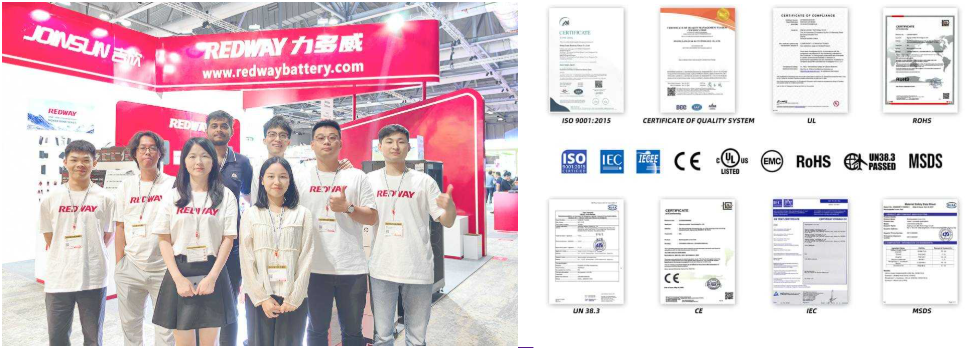Selecting a forklift battery changer involves evaluating factors like battery type compatibility, operational efficiency, safety features, maintenance requirements, and cost. Automated systems reduce labor costs, while manual or semi-automatic options suit smaller operations. Prioritize models with overload protection, ergonomic design, and compliance with industry standards like OSHA to ensure safety and productivity.
48V 280Ah Lithium Forklift Battery
What Are the Different Types of Forklift Battery Changers Available?
Forklift battery changers include manual, semi-automatic, and fully automatic systems. Manual changers require physical effort to swap batteries, ideal for low-budget operations. Semi-automatic models use hydraulic lifts or rollers for easier handling. Fully automatic changers integrate robotic arms and sensors, enabling seamless battery swaps in high-demand warehouses. Specialty options include tilt-and-slide systems for confined spaces.
| Type | Features | Best For |
|---|---|---|
| Manual | Low cost, minimal automation | Small warehouses |
| Semi-Automatic | Hydraulic assist, medium throughput | Multi-shift operations |
| Fully Automatic | Robotic integration, IoT-enabled | High-volume facilities |
How Do Forklift Battery Changers Improve Operational Efficiency?
Automated battery changers minimize downtime by completing swaps in under 5 minutes, compared to 15–30 minutes for manual methods. They reduce labor costs by eliminating manual handling and enable 24/7 operations through rapid cycling. Advanced models sync with fleet management software to track battery health and optimize charging schedules, extending battery lifespan by up to 20%.
Modern systems utilize predictive analytics to anticipate battery depletion patterns. For example, sensors can detect voltage drops and automatically queue replacement batteries before forklifts return to charging stations. This proactive approach reduces unplanned stoppages by 35%. Additionally, conveyor-assisted changers in large facilities can service multiple vehicles simultaneously, creating a continuous workflow. Some warehouses report a 22% increase in daily throughput after implementing automated systems paired with smart charging stations that prevent overcharging.
What Safety Features Should a Reliable Forklift Battery Changer Have?
Key safety features include overload sensors to prevent mechanical failure, emergency stop buttons, and anti-slip platforms. Look for CE or UL certification, reinforced steel frames, and automatic shutoff during misalignment. Ergonomic designs reduce worker strain, while spark-resistant materials mitigate explosion risks in environments with flammable gases.
How Can Regular Maintenance Extend the Lifespan of a Battery Changer?
Monthly inspections of hydraulic fluids, belt tension, and electrical connections prevent breakdowns. Lubricate moving parts quarterly and calibrate sensors annually. Clean acid residue from battery contacts to avoid corrosion. Document maintenance logs to identify wear patterns; replacing rollers or motors proactively can extend the system’s lifespan beyond 10 years.
What Role Does Automation Play in Modern Battery Changing Systems?
Automation integrates IoT-enabled sensors and AI to predict battery failure, schedule swaps, and sync with warehouse management systems. Robotic arms with 6-axis mobility handle batteries weighing over 2,000 lbs, while RFID tags ensure correct battery placement. These systems reduce human error and enable lights-out operations in fully automated facilities.
Advanced automation platforms now incorporate machine learning algorithms that analyze historical data to optimize battery rotation schedules. For instance, systems can prioritize batteries with higher charge cycles during peak operational hours. Some models feature remote diagnostics, allowing technicians to troubleshoot issues via mobile apps without physical inspections. A recent case study showed a 50% reduction in misalignment errors after implementing vision-guided robotic changers that adjust positioning in real-time using laser scanners.
What Environmental Benefits Do Advanced Battery Changers Offer?
Efficient changers reduce energy waste by ensuring optimal charging cycles, cutting CO2 emissions by up to 15%. Some models incorporate regenerative braking systems to recapture energy during battery handling. Lead-acid battery spill containment trays and lithium-ion compatibility further minimize ecological impact.
Why Are Custom Training Programs Essential for Battery Changer Operators?
Specialized training reduces accident risks by teaching proper load balancing, emergency protocols, and maintenance basics. Programs tailored to automated systems cover software navigation and error code troubleshooting. Certified training can decrease workplace injuries by 40% and ensure compliance with OSHA Standard 1910.178(g).
Expert Views
Modern forklift battery changers are no longer just tools—they’re strategic assets,” says a Redway Battery Solutions engineer. “Integrating telematics for real-time battery health monitoring has revolutionized efficiency. For example, our clients saw a 30% reduction in downtime after adopting AI-driven systems. However, companies must prioritize operator training to fully leverage these advancements.”
Conclusion
Choosing the right forklift battery changer hinges on balancing automation, safety, and cost. While manual systems suit smaller operations, automated changers deliver long-term ROI in high-throughput environments. Regular maintenance and training amplify productivity gains, making them indispensable for modern warehouses aiming to optimize energy use and operational uptime.
FAQs
- How much does a forklift battery changer cost?
Type Price Range Manual $5,000–$10,000 Semi-Automatic $15,000–$25,000 Fully Automatic $50,000+ - Can battery changers handle lithium-ion batteries?
- Yes, but ensure the model has voltage compatibility (typically 48V–80V) and temperature controls. Lithium-ion requires precise charging; opt for changers with programmable logic controllers (PLCs).
- What’s the average swap time for automated systems?
- Advanced systems complete swaps in 3–5 minutes, versus 15+ minutes manually. Downtime reduction boosts daily productivity by up to 8 hours in multi-shift operations.





